
Interactive Frequency Chart by Independent Recording Network San Francisco Audiophile Society
EQ Frequency Chart. To make it easier to create a balanced frequency chart music, it also helps to have a summary of the EQ recommendations for each instrument. Use this handy EQ chart that follows: 50 Hz. Increase for drums to add fullness; decrease for bass to reduce boom and make overtones clearer.
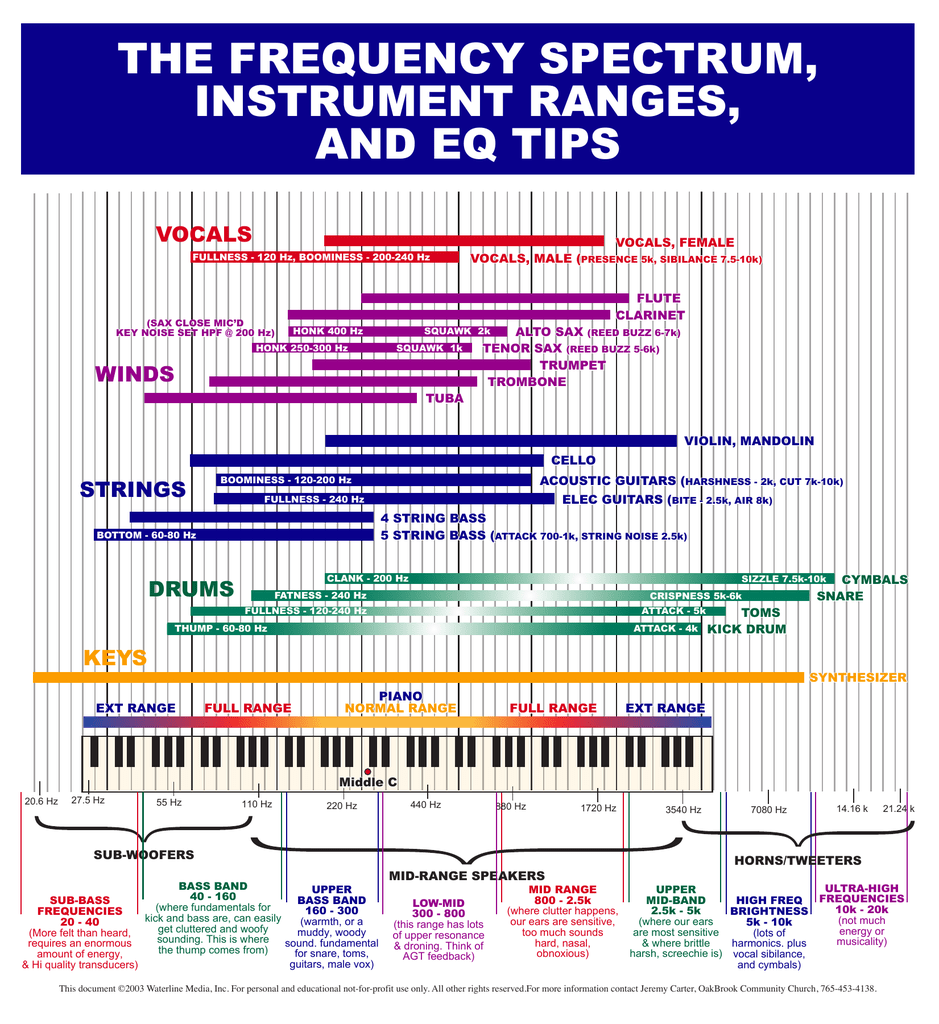
the frequency spectrum, instrument ranges, and
EQ References By looking at the various instruments you can see where their most important frequency information is. Here are a few simple things you can do to make this EQ chart help you improve your EQ skills. It's easy to see how far you can filter a specific instrument.

Nifty instrument frequency chart, helps with EQ'ing and mixing. makinghiphop
Knowing where each instrument fits in a frequency spectrum will help you achieve mixes that stand up to commercial releases. In this article, we will demystify equalization and go over the tips and tricks of using EQ like a pro.

Frequency ranges of several musical instruments [30] Download Scientific Diagram
Having the instrument frequency chart in front of you can be very handy when trying to think about which instrument fits where. That said, all instruments are unique- the timbre, tone, and even frequencies produced can vary depending on the context. Trying to use a violin for a fast piece with super high harmonics is a terrible idea as getting.

EQ Frequency Chart For Electronic Music
Each instrument has a range of frequencies in which terms like "bottom," "crispness," etc. live; they'll be listed as starting points when you're trying to achieve a particular outcome with EQ. An EQ Cheat Sheet for 14 Common Instruments 1. Bass Guitar 50 - 80 Hz: Bottom 700 Hz: Attack 2.5 kHz: Snap 2. Kick Drum 50 - 60 Hz: Bottom
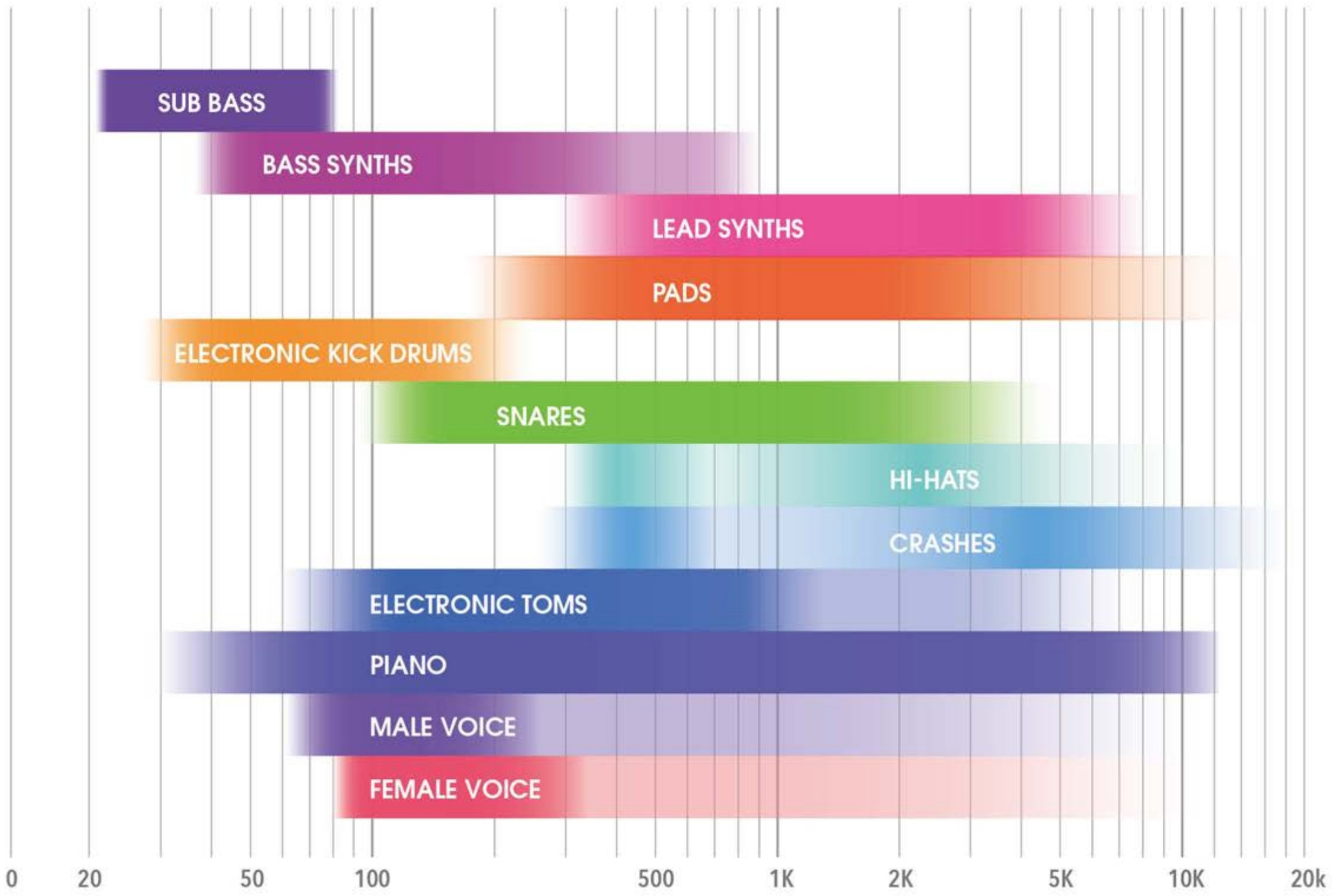
INSTRUMENT FREQUENCY CHART MusicTech Nov 2019
Visualizing where each instrument sits in the frequency scale will help you determine which frequencies and sounds are clashing with each other in your mix, and will help you achieve the highest quality mix before proceeding to the mastering process. Choose Your Sounds Wisely The EQ is a great weapon. However, it does have its limits.
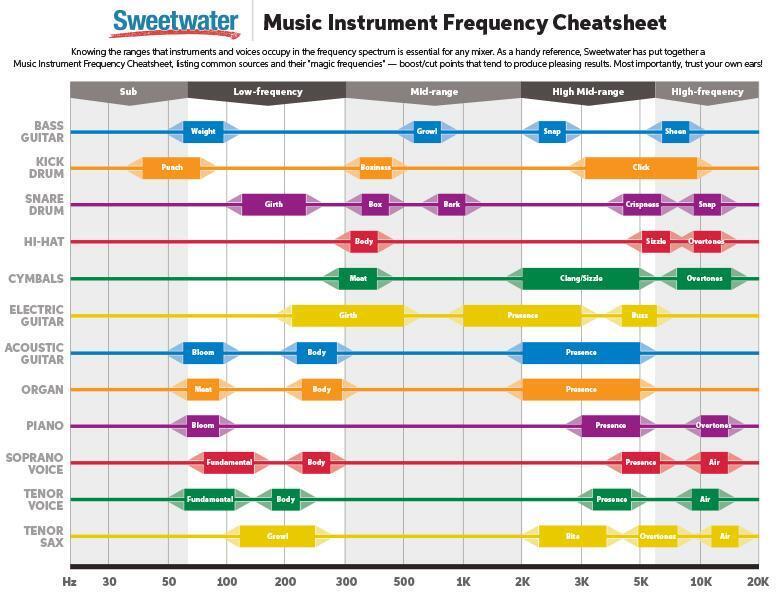
EQ Frequency of Musical Instruments Cheat Sheet
THE FREQUENCY SPECTRUM, INSTRUMENT RANGES, AND EQ TIPS HONK 250-300 Hz SQUAWK 1k HONK 400 Hz SQUAWK 2k TENOR SAX (REED BUZZ 5-6k) (SAX CLOSE MIC'D KEY NOISE SET HPF @ 200 Hz) This document ©2003 Waterline Media, Inc. For personal and educational not-for-profit use only.
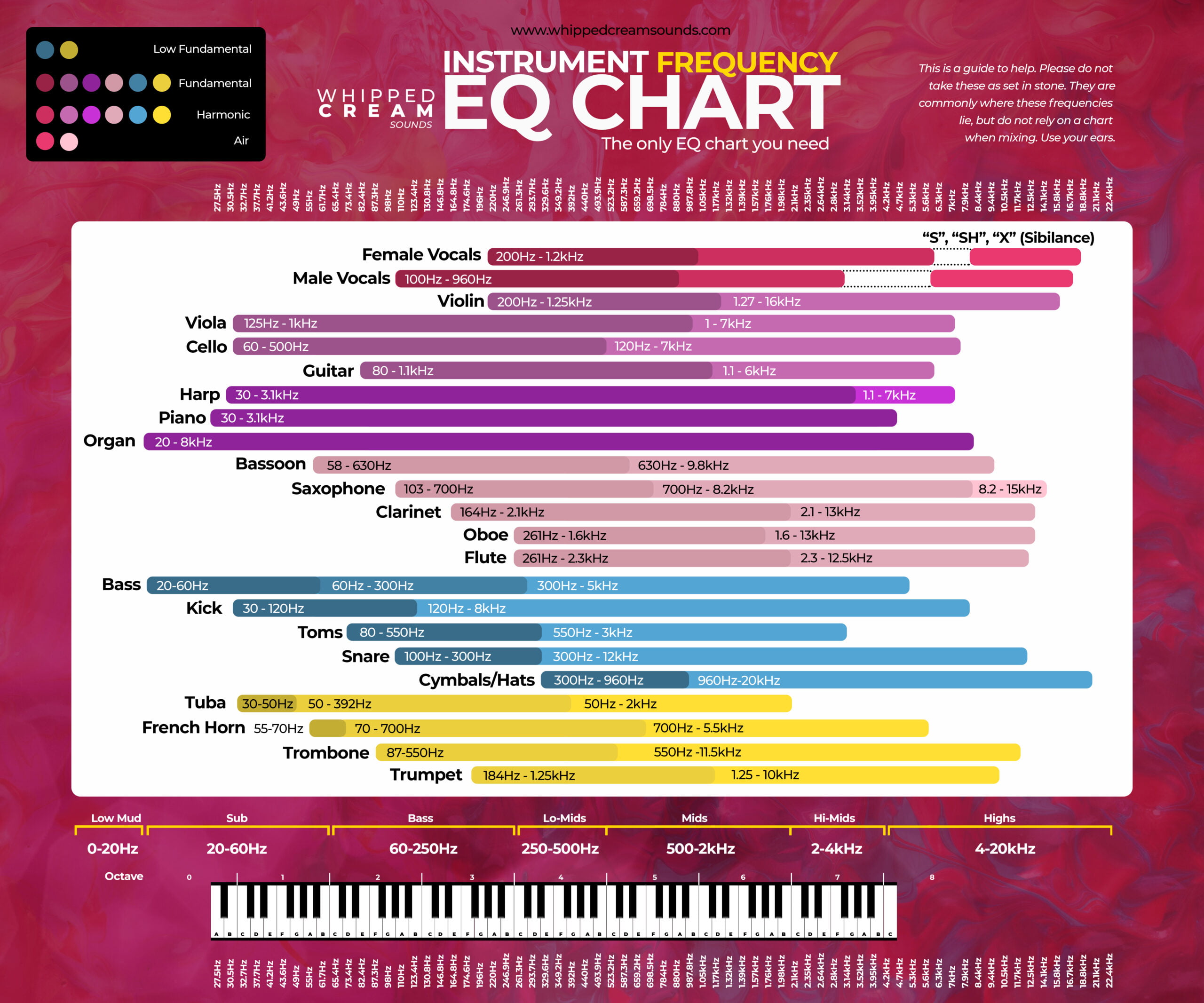
Audio Spectrum Explained With Diagrams & Examples
378 Appendix 2. (Continued) Approximate Frequency Range. Strings Violin Viola Cello Double Bass Guitar Keyboards Piano Organ Percussion Celeste Timpani Glockenspiel Xylophone Top 200 Hz-3.5KHz 125 Hz-1KHz. 63 Hz-630 Hz. 40 Hz-200 Hz. 80 Hz-630 Hz Top. 28 Hz-4.1KHz. 20 Hz-7KHz Top 260 Hz-3.5KHz.

SINE Musical Instrument Frequency Chart
An EQ cheat sheet, also called an instrument frequency chart or an audio frequency chart, is an infographic that displays the supposed frequency responses of every common instrument laid out across the frequency range of human hearing.

Chart showing the audible frequency range of a variety of musical instruments. Resimler
Music Instrument Frequency Cheatsheet Knowing the ranges that instruments and voices occupy in the frequency spectrum is essential for any mixer. As a handy reference, Sweetwater has put together a Music Instrument Frequency Cheatsheet, listing common sources and their "magic frequencies" — boost/cut points that tend to produce pleasing results.
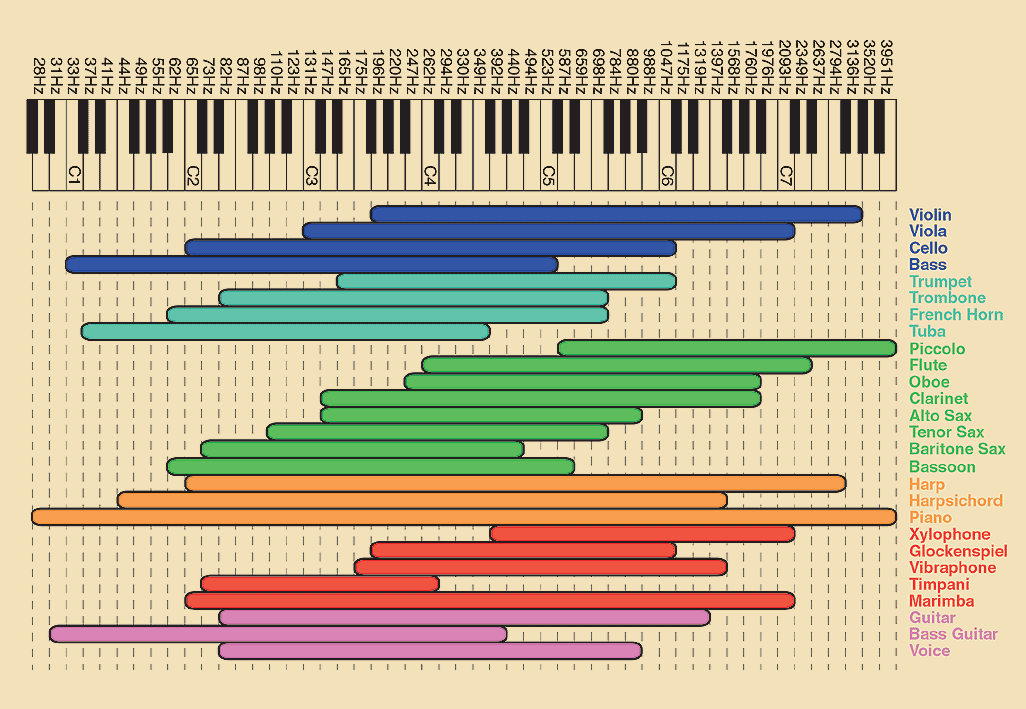
Remember Music Ideas EQ Frequency Chart for Instruments & Electronic Sounds
Seeing where each instrument fits on the frequency spectrum will help you identify which instruments and frequencies might be fighting each other in your mix, and will help you get the best possible mix before that final mastering step. Theory guides, production tips, new free plugins, gear guides and more—delivered weekly
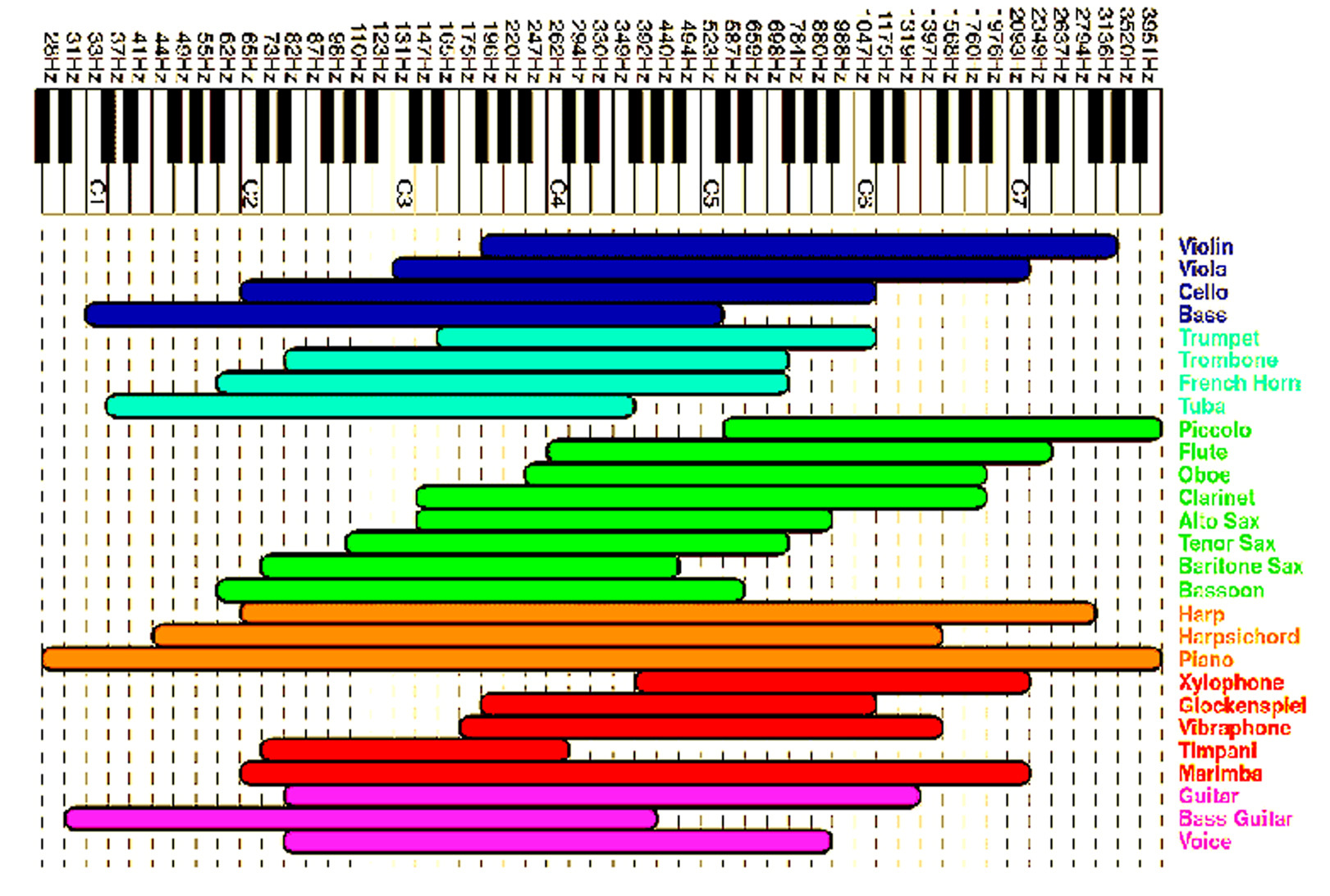
Acoustics Audiofanzine
So below is a useful EQ frequency chart and should help offer a rough guide to frequency ranges and EQ - making it easier to decide what frequencies to focus on in your mix when you are using EQ. The article will help you find what frequencies to boost and cut on different instruments and sounds, and over time it will help you to train your ears .
Frequency Range of different instruments. audioengineering
Pictured below is what looks to me like a very handy chart of the frequency range of orchestral instruments. This is intentionally small because you should click the image to be taken to the interactive version of the chart. Frequency Chart

The Frequency Spectrum of all Instruments >)azZTechs
For this reason, if analyzing music with a frequency chart - known as a frequency spectrum - it's possible to identify which instruments contribute most to different frequency ranges. As humans, we can only hear sound vibrations between 20 Hz and 20,000 Hz, but that's enough to contain all of the different sounds in the most common.

The audio spectrum understanding EQ and frequency Videomaker
Frequency Ranges So you probably noticed that one of the common trends in all the categories of instruments was that size has big effect on the sound quality of instruments.. Check out the following chart and see where your instrument falls in the spectrum of high to low! For the purposes of this, Just refer to the black sections of the each.

A very useful chart (instrument frequencies / mixing guidelines) r/WeAreTheMusicMakers
Description Frequency Range Rumble 25Hz - 40Hz Bottom 60Hz - 90Hz Boom/Punch 100Hz - 170Hz Warmth 130Hz - 220Hz Fullness/Mud 250Hz - 450Hz Honk 450Hz - 1kHz Tinny 1kHz - 2kHz Crunch 2kHz - 4kHz. IMPORTANT: Don't use these charts when you're mixing, or try to avoid it..